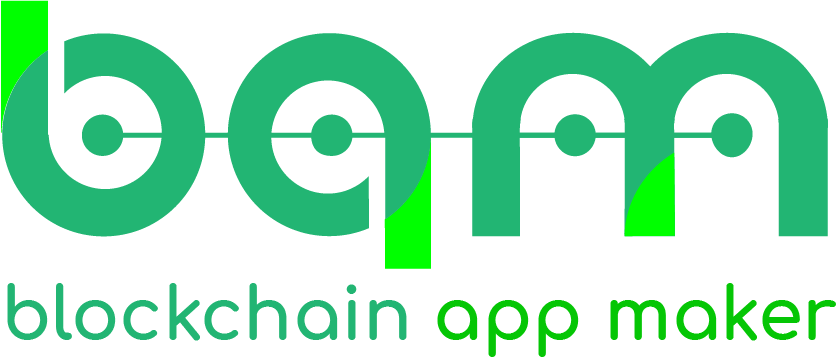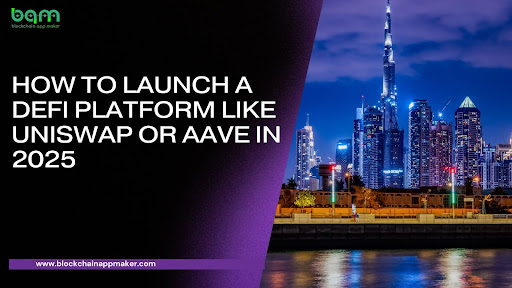A Practical Breakdown of Protocols, Tokenomics, and Compliance
Decentralized Finance (DeFi) is no longer just a buzzword—it’s a fundamental shift in the way people access financial services. Platforms like Uniswap and Aave have revolutionized peer-to-peer trading and lending, becoming key pillars of the Web3 ecosystem. As we move deeper into 2025, the DeFi space continues to mature, with growing user adoption, innovative protocols, and tighter regulatory scrutiny.
Why Launch a DeFi Platform in 2025?
The DeFi market aims to exceed $100 billion Total Value Locked by 2025 because of:
- More people search for banking substitutions that operate independently of centralized institutions.
- Expanding access to non-custodial financial tools.
- Mainstream adoption of Web3 wallets and Layer 2 scalability solutions.
- New businesses and fintech organizations along with blockchain enterprises should seize this DeFi market opportunity in the present.
1. Choosing the Right DeFi Model: AMM vs Lending Protocol
Uniswap-like (AMM – Automated Market Maker)
- Function: Decentralized trading using liquidity pools instead of order books.
- Key Protocol Features:
- Smart contracts for swaps and liquidity provision.
- Liquidity pool creation tools.
- Slippage & impermanent loss handling.
- Trending Tech in 2025:
- Uniswap V4 Hooks: Custom logic injected into AMM pools.
- Cross-chain AMMs via LayerZero and Axelar.
Aave-like (Lending & Borrowing)
- Function: Peer-to-peer lending via overcollateralized loans.
- Key Protocol Features:
- Interest rate models (stable/variable).
- Risk module and liquidation logic.
- Flash loan capabilities.
- 2025 Innovations:
- Real-world asset (RWA) tokenization.
- Credit delegation and undercollateralized lending.
2. Protocol Stack: What to Build and Integrate
Here’s a practical tech stack breakdown for launching a DeFi app:
| Layer | Components |
| Frontend | React.js, Next.js, Web3.js or Ethers.js |
| Smart Contracts | Solidity (Ethereum), Vyper (security-focused), Move (for Aptos/Sui) |
| Blockchain Network | Ethereum, Polygon, Arbitrum, Base, or Avalanche |
| Wallet Integration | MetaMask, WalletConnect, Coinbase Wallet |
| Analytics & Monitoring | Dune Analytics, Tenderly, The Graph |
| Security Tools | OpenZeppelin, Slither, Chainlink Keepers for automation |
Use modular architecture for flexibility and faster updates. For example, leverage account abstraction (ERC-4337) to improve UX and enable gasless transactions.
3. Designing Robust Tokenomics
Tokenomics will make or break your DeFi platform. Focus on sustainability and incentives.
Key Token Use Cases:
- Governance: DAO voting on upgrades (use tools like Snapshot or Tally).
- Staking/Yield Farming: To bootstrap liquidity and incentivize user activity.
- Fee Sharing: Distribute platform revenue among token holders.
Token Metrics to Define:
- Total Supply Cap (Fixed vs Inflationary).
- Vesting schedules for team and investors.
- Emission curve and reward halving mechanics.
- Treasury allocation for growth and audits.
Pro Tip: Use simulations (e.g., TokenSpice) to test different economic models before launch.
4. Legal & Regulatory Compliance in 2025
In 2025, DeFi regulation is a top priority. Navigate the legal landscape proactively:
Key Areas to Address:
- KYC/AML Compliance (especially for fiat ramps and institutional onboarding).
- Security Audits: At least two independent audits before mainnet launch.
- Licensing: Check requirements in your jurisdiction (e.g., SEC in the US, FCA in the UK, VARA in Dubai).
- DAO Legal Wrapper: Register your DAO in crypto-friendly jurisdictions like Wyoming, Switzerland (Zug), or the British Virgin Islands.
Tools & Partners:
- Chainalysis or TRM Labs for AML tracking.
- OpenLaw or LexDAO for smart legal contracts.
- Blockchain App Maker for end-to-end DeFi development with built-in compliance modules.
5. Launch Strategy: From MVP to Mainnet
MVP Checklist:
- Core smart contracts deployed on testnet.
- Frontend integrated with wallet.
- Tokenomics dashboard & rewards tracking.
- Audit report published.
Marketing Plan:
- Launch via Testnet Campaigns & Bug Bounties (Galxe, QuestN).
- Build hype with Airdrops and Liquidity Mining.
- Partner with DeFi influencers and Crypto Twitter threads.
- Host Twitter Spaces / AMA sessions to gather community feedback.
Post-Launch:
- Roll out governance gradually (avoid plutocracy).
- Add more tokens & pools based on community demand.
- Expand to other chains using cross-chain bridges.
Example Budget Estimate
| Task | Estimated Cost |
| Smart Contract Development | $25,000–$60,000 |
| UI/UX & Frontend | $10,000–$30,000 |
| Audits (2 rounds) | $40,000–$100,000 |
| Marketing & Growth | $20,000+ |
| Legal & Compliance | $15,000–$50,000 |
| Total | $110,000 – $250,000+ |
Final Thoughts
Developing a DeFi platform like Uniswap or Aave requires more than writing smart contracts because it demands trust establishment and security measures and develops user value over the long term in 2025. A DeFi app designed with scalable infrastructure combined with bulletproof tokenomics alongside a compliance-first mindset will create superiority in the competitive DeFi market that continues to grow.
Need Help Building Your DeFi Platform?
We at Blockchain App Maker create DeFi platforms along with their security measures and scalability for complete compliance with industry regulations. Our team assists developers in creating customized DeFi solutions which include AMMs, lending protocols, and any specific DeFi products through complete design and production and deployment services.
Contact us today for a free consultation and bring your DeFi idea to life.

